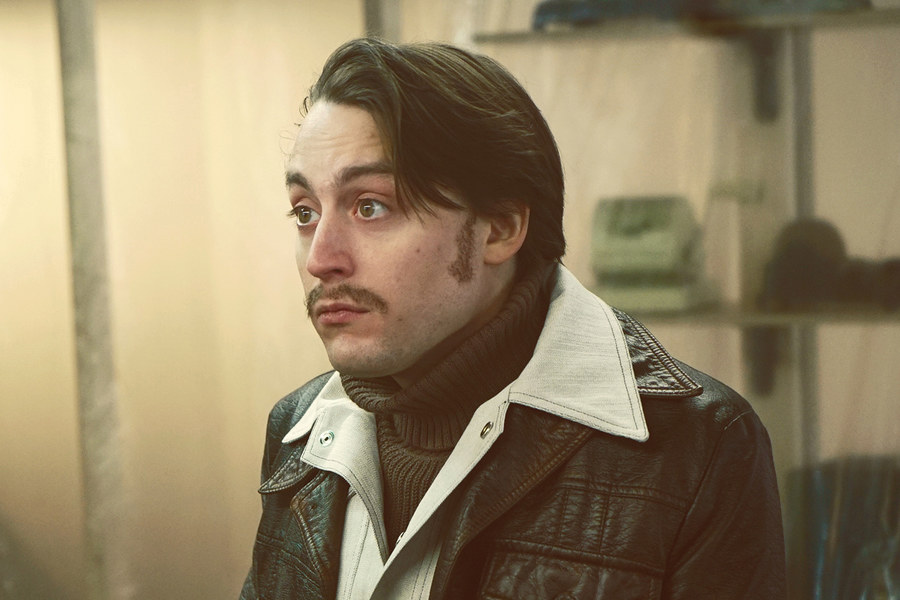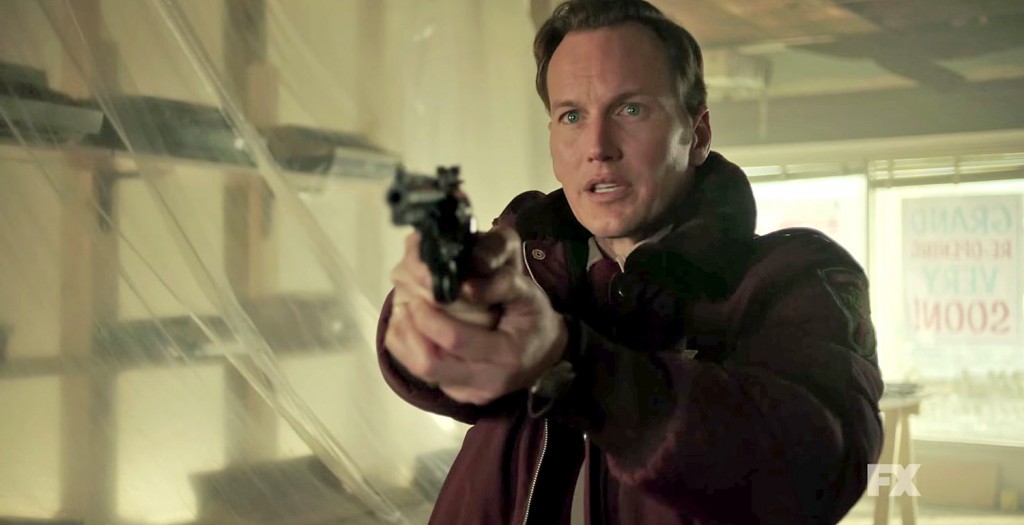The second season premiere of FX’s Fargo is probably the best thing to happen to television this year. There was an admirable sturdiness to the first season, but showrunner Noah Hawley brings a decisive confidence to our introduction to Kieran Culkin’s sleazy, emotionally wounded Rye Gerhardt as he lives out his last day alive. Hawley loads the episodes with moments big (Rye massacring a middle-of-nowhere diner after an attempt to intimidate a judge goes awry in classic Fargo fashion), small (Jeffrey Donovan’s sadistic brute Dodd Gerhardt waiting in brooding silence in a parking lot) and bizarre (the appearance of a bonafide UFO at the end of the episode). “Waiting for Dutch” is as much a statement as it is an episode of television: Go big or go home. The full second season of Fargo is an ambitious, occasionally stumbling near-masterpiece of television storytelling.
What’s really impressive about this second incarnation of Fargo is how uniformly excellent the performances are. Hawley’s casting decisions are unusual, and they pay serious dividends. Kirsten Dunst brings an anxious, desperate madness to newly enlightened housewife Peggy Blumquist, Breaking Bad‘s Jesse Plemons channels his “aw shucks” corn-fed persona into low rent middle America MacBeth as her butcher’s assistant husband Ed. The ever reliable Patrick Wilson turns in a career-best performance as conflicted State Trooper Lou Solverson, an inherently decent man trying and failing to prevent a disastrous mob war from spiraling even further out of control. Even quiet veterans like Jean Smart (as Gerhardt crime family matriarch Floyd) and – of all people – Ted Danson (as Solverson’s firm but kind sheriff father-in-law) are revelatory here. And this is to say nothing of Cristin Milioti’s reserved performance as Lou’s cancer-stricken wife or Nick Offerman’s Walter Sobchak-ian Karl Weathers. Unlike, say, True Detective‘s follow-up season, Fargo’s players aren’t in competition to see who can chew the most scenery. Rather, the power of the show comes in watching these characters bounce in and out of each other’s unique orbits.
Fargo is a show where things fall apart because characters are unable or unwilling to say what they mean. An altercation between Lou Solverson and Dodd Gerhardt masks threats in Midwestern pleasantries. The Blomquists’ descent from normal folk to murder accessories hinges on Peggy accidentally hitting Rye with her car and choosing to hide the evidence over reporting the incident to the police.
“The Massacre at Sioux Falls,” a historically violent incident first referred to by a much older Lou Solverson in the first season, hinges on a lie told on a whim by Gerhardt henchman Hanzee. The principles of the incident, a host of policemen holed up in a Sioux Falls hotel and a small army of Gerhardt hired guns, are pitted against each other under definitively false pretenses. The senselessness of violence is an intrinsic element of the Fargo story, even in the Coens’ film. But while Frances McDormand’s police chief Marge Gunderson is unable to fathom why so much blood would be spilt over “a little bit of money,” Wilson’s Vietnam vet-turned-lawman is haunted by the deaths he wasn’t able to prevent at home or abroad. The reveal that Danson’s Larsson has been working on a universal language as an outlet for his grief over his wife’s death and daughter’s cancer seems like a storytelling dead-end at first- until you realize that it’s a coping mechanism for all the horror he’s seen as a policeman and veteran. After confronted by the existence of a hovering UFO during the Sioux Falls gunfight, Solverson and Larsson decide to never tell anyone of what they saw for fear of looking crazy.
Fargo in its film and television incarnations is about good in the face of unthinkable evil: Marge pointing a gun on Gaear Grimsrud as he feeds his accomplice into a woodchipper, reluctant cop Gus Grimley killing the seemingly unkillable Lorne Malvo. Fargo S2 expands that focus, pitting characters both good and evil against the ennui of everyday life. Flamboyant black gangster Mike Milligan (a scene-stealing Bokeem Woodbine) is rewarded by the Kansas City Mafia for claiming new territory with a mundane accounting job within the syndicate: a king reduced to a 9 to 5’er. Betsy Solverson comes to peace with the cancer diagnosis that we as viewers know will claim her life, because of the duties she has to her daughter and husband. When her daughter’s babysitter references Camus to Betsy, she dismisses his entire philosophy with an eyeroll. “Whoever wrote that didn’t have a six-year-old daughter to take care of.”
Maybe most intriguing is Hanzee, a Native-American raised as the subordinate for the white Gerhardt family. Hanzee violently revolts against white supremacy, murdering a group of racists at a bar built on the site of native death and turning on the Gerhardts, but ultimately resigns himself via plastic surgery to a new life as Moses Tripoli, the Caucasian mob boss seen briefly in Fargo‘s first season. There’s a powerful , albeit ham-handedly unsubtle, metaphor in Hanzee surrendering his identity and becoming a white man of influence. My major gripe is that I wish Hawley had elected to not opt for Star Wars prequalian literalism in having Hanzee literally become white via magic surgery and meet his Season 1 goons as children in the finale, an unnecessary wrinkle in an otherwise stellar hour of television.
Does Fargo the television show stand on its own, independent of the 1996 film? I’d say yes and no. Hawley’s created a season of television here that can be appreciated on its own merits with a cast of nuanced original characters, a strong aesthetic sense that isn’t beholden to the cinematography of the film. But it’s also an almost scholarly examination of the Coens’ canon from a devotee, from its ’70s remixes of classic Coen tracks like “I am a Man of Constant Sorrow” to its very deliberate restaging of “Hi” McDunnough’s prophetic dream in Raising Arizona. Fargo‘s second season was a show torn between its influences and its own ambitions.







